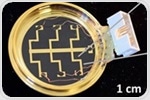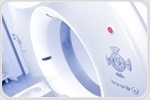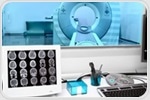| |  Researchers from the British Heart Foundation have developed a blood test that flags up heart failure early on and a “pumping” patch that could help to repair heart damage after an attack. Clinical trials testing the patches on patients will begin within the next two years. Researchers from the British Heart Foundation have developed a blood test that flags up heart failure early on and a “pumping” patch that could help to repair heart damage after an attack. Clinical trials testing the patches on patients will begin within the next two years. | |
|
| |  One of the largest and most robust studies to be conducted so far on the effect of contraceptive methods on the risk of acquiring HIV concluded that there were no significant differences among users of any of four popular long-acting contraceptives. This includes DMPA, levonorgestrel, and intrauterine devices. One of the largest and most robust studies to be conducted so far on the effect of contraceptive methods on the risk of acquiring HIV concluded that there were no significant differences among users of any of four popular long-acting contraceptives. This includes DMPA, levonorgestrel, and intrauterine devices. | |
|
| |  A new detection method which can identify the presence of bacteria within a minute, while distinguishing healthy from non-viable bacteria, could save many lives and a lot of money. Scientists at the University of Warwick reported this technology, based on alterations in electrical signaling in bacteria in response to external electrical stimulation. A new detection method which can identify the presence of bacteria within a minute, while distinguishing healthy from non-viable bacteria, could save many lives and a lot of money. Scientists at the University of Warwick reported this technology, based on alterations in electrical signaling in bacteria in response to external electrical stimulation. | |
|
| |  A team of bioengineers at Rensselaer Polytechnic Institute, with funding from the National Institute of Biomedical Imaging and Bioengineering, have developed an artificial intelligence technique that uses image post-processing to rapidly convert low-dose computed tomography scans to images of superior quality, compared to low-dose scans that do not use the AI technique. A team of bioengineers at Rensselaer Polytechnic Institute, with funding from the National Institute of Biomedical Imaging and Bioengineering, have developed an artificial intelligence technique that uses image post-processing to rapidly convert low-dose computed tomography scans to images of superior quality, compared to low-dose scans that do not use the AI technique. | |
|
| |  To diagnose and treat diseases like cancer, scientists and doctors must understand how cells respond to different medical conditions and treatments. Researchers have developed a new way to study disease at the cellular level. To diagnose and treat diseases like cancer, scientists and doctors must understand how cells respond to different medical conditions and treatments. Researchers have developed a new way to study disease at the cellular level. | |
|
| |  A University of Arkansas for Medical Sciences research team led by Vladimir Zharov, Ph.D., D.Sc., has demonstrated the ability to detect and kill circulating tumor cells in the blood using a noninvasive device called Cytophone that integrates a laser, ultrasound and phone technologies. A University of Arkansas for Medical Sciences research team led by Vladimir Zharov, Ph.D., D.Sc., has demonstrated the ability to detect and kill circulating tumor cells in the blood using a noninvasive device called Cytophone that integrates a laser, ultrasound and phone technologies. | |
|
| |  Each year, 1 million men in the U.S. undergo biopsies to determine whether they have prostate cancer. The biopsy procedure traditionally has been guided by ultrasound imaging, but this method cannot clearly display the location of tumors in the prostate gland. Each year, 1 million men in the U.S. undergo biopsies to determine whether they have prostate cancer. The biopsy procedure traditionally has been guided by ultrasound imaging, but this method cannot clearly display the location of tumors in the prostate gland. | |